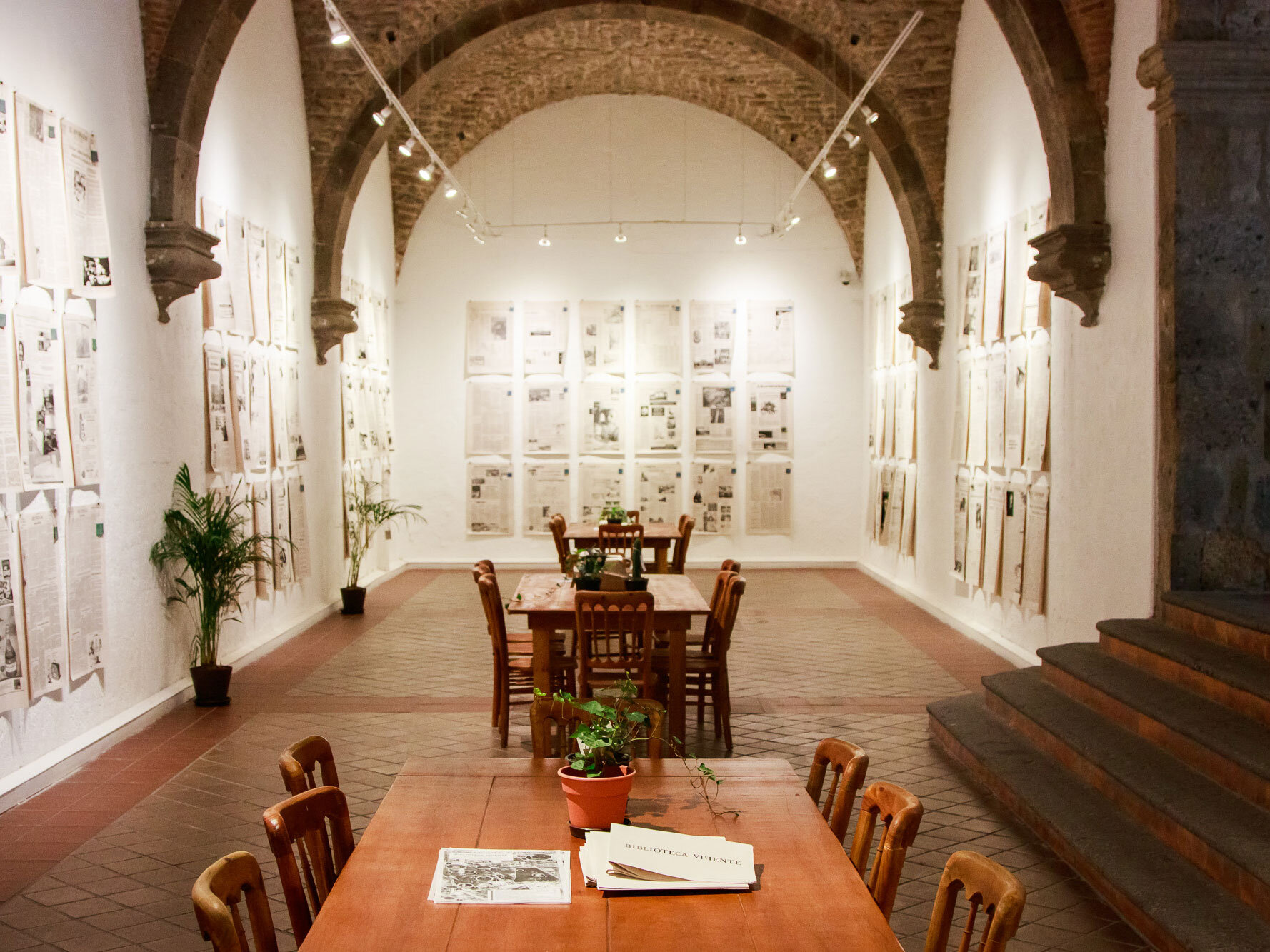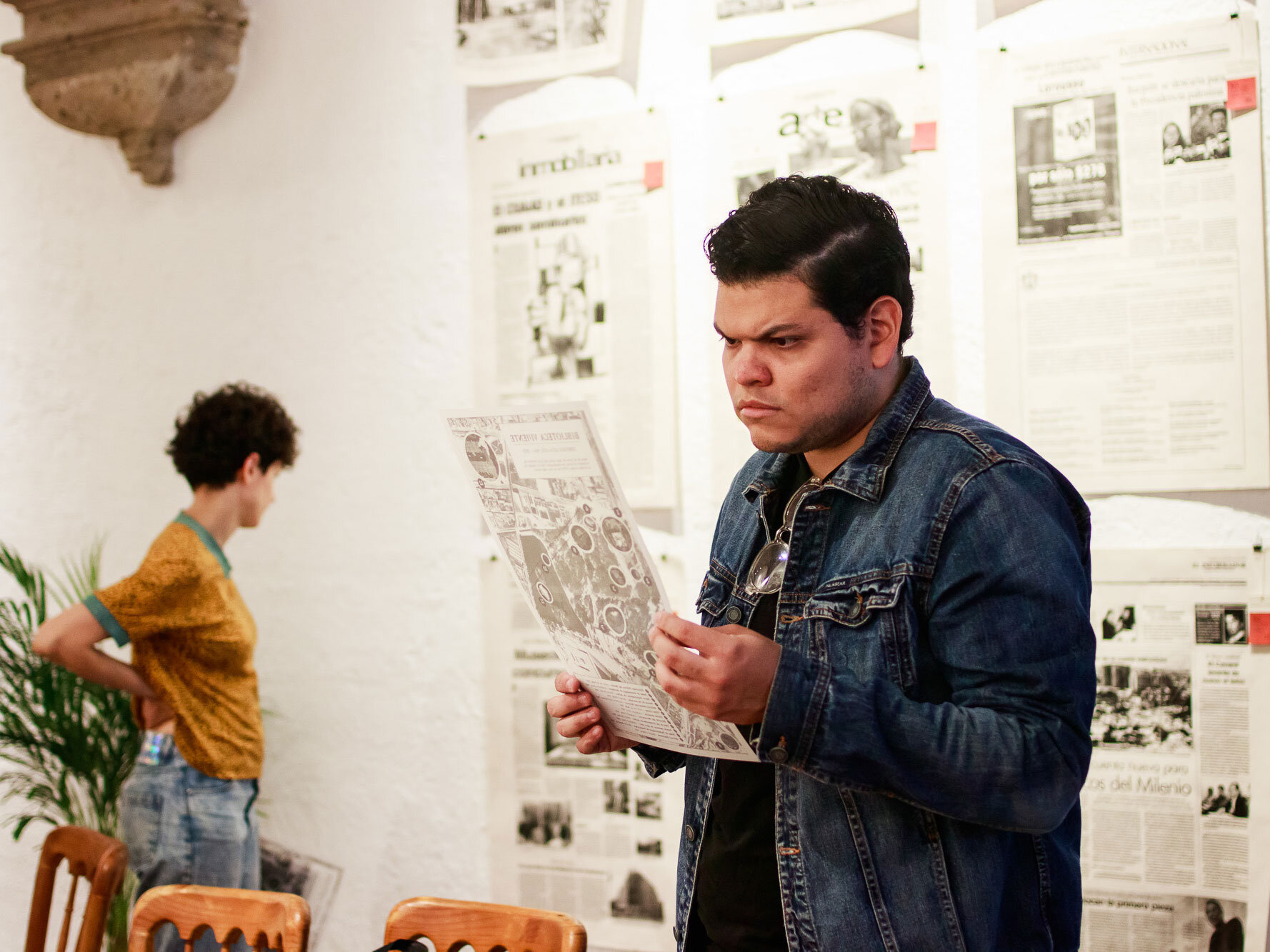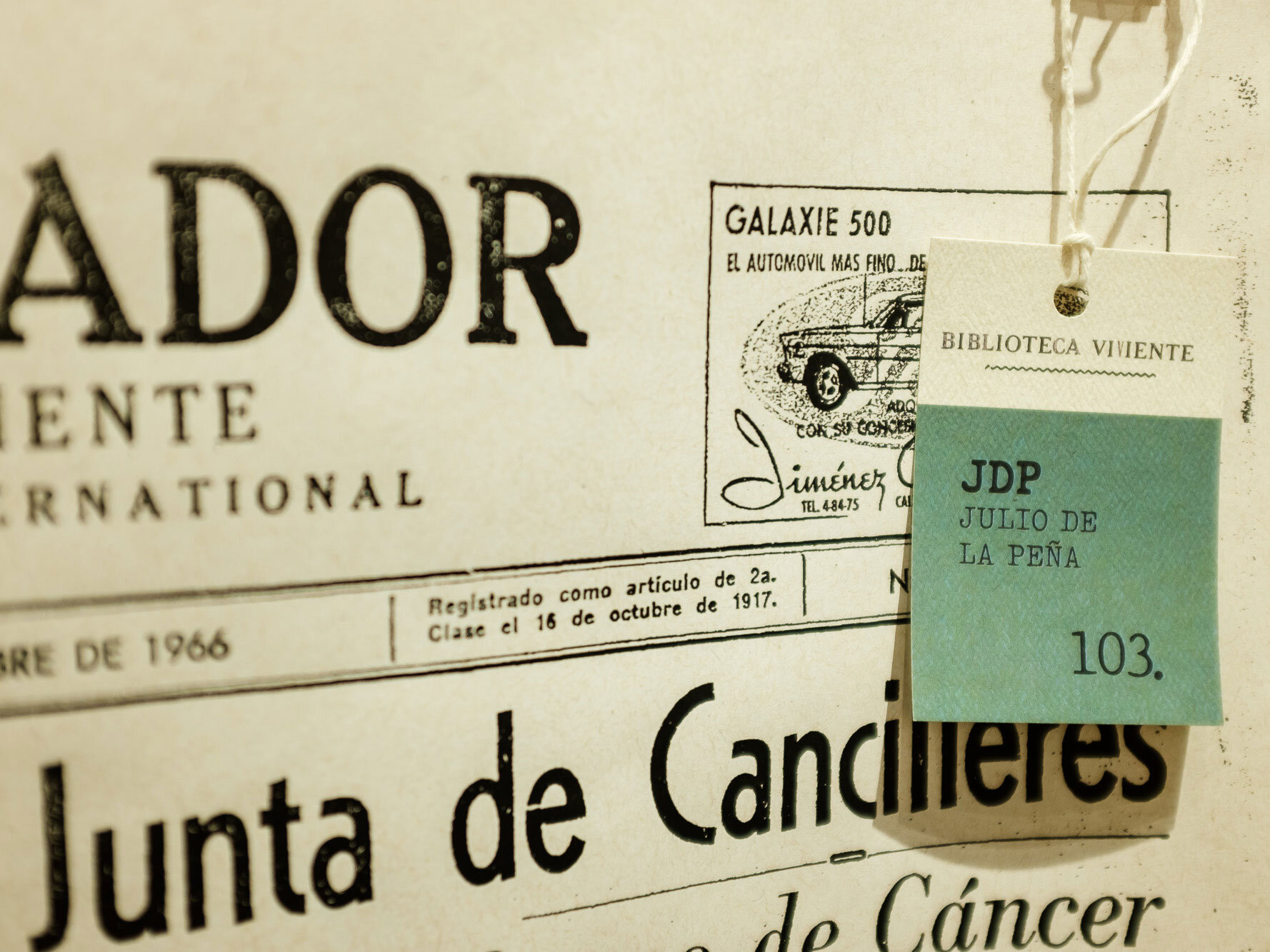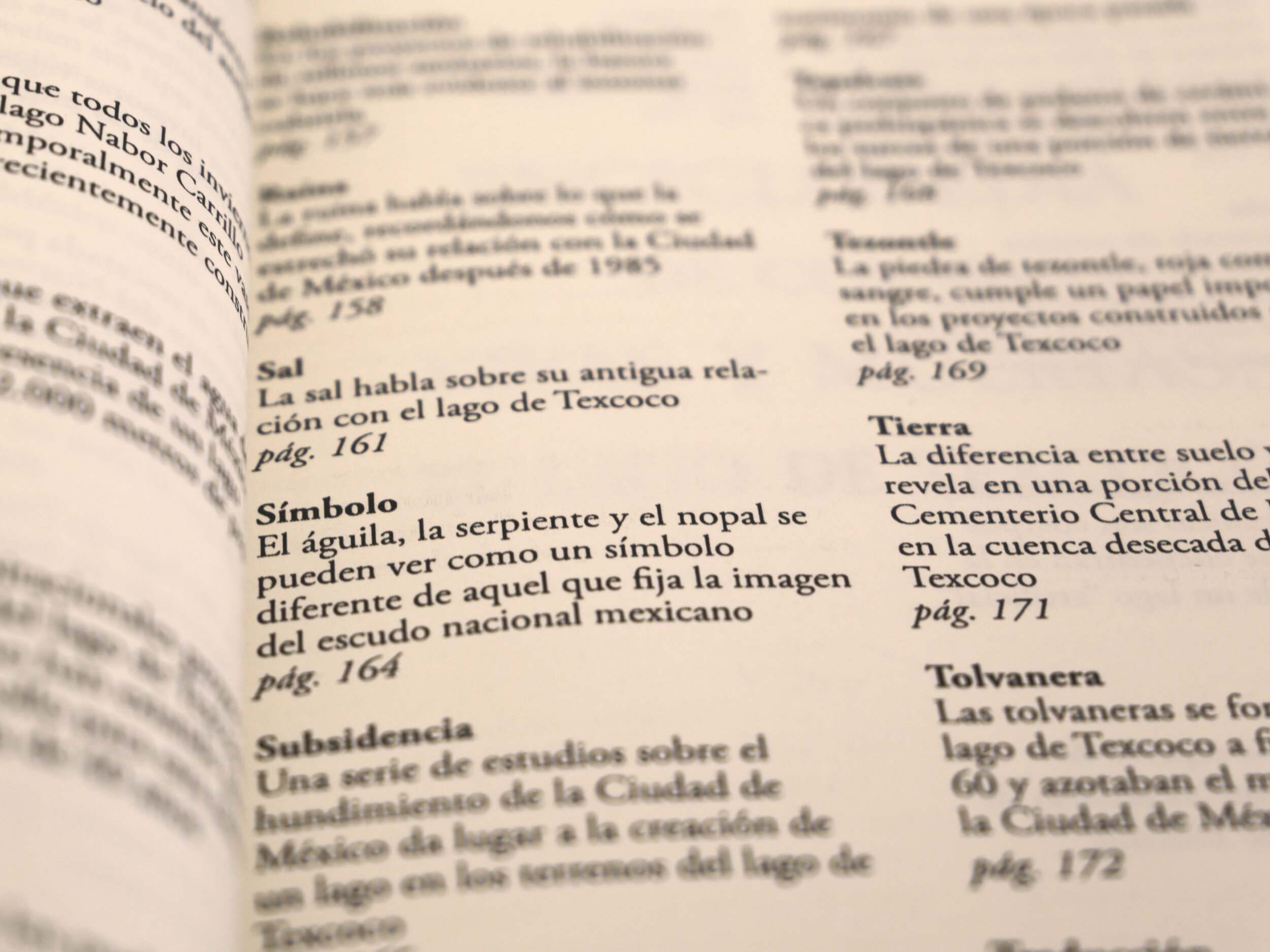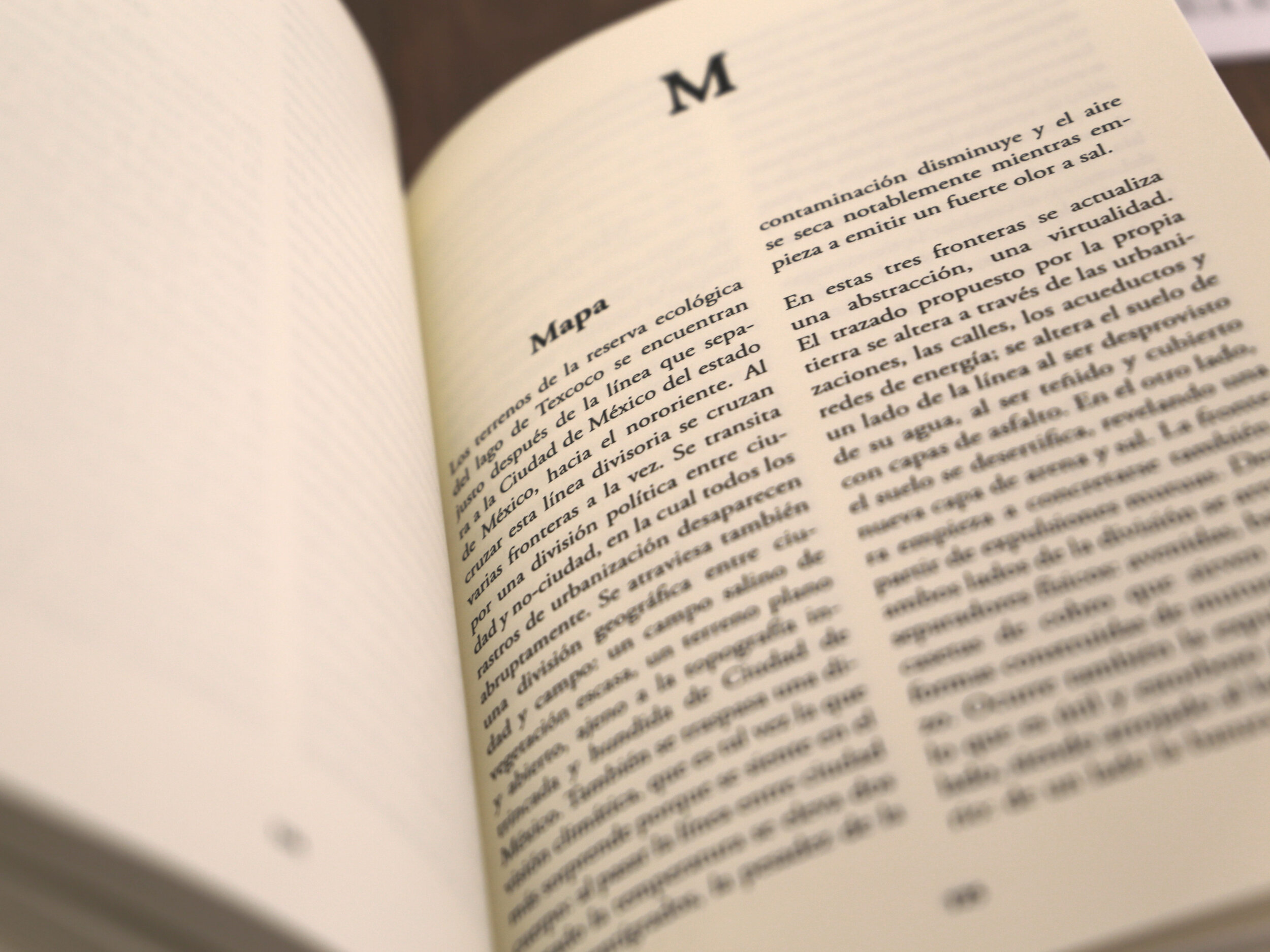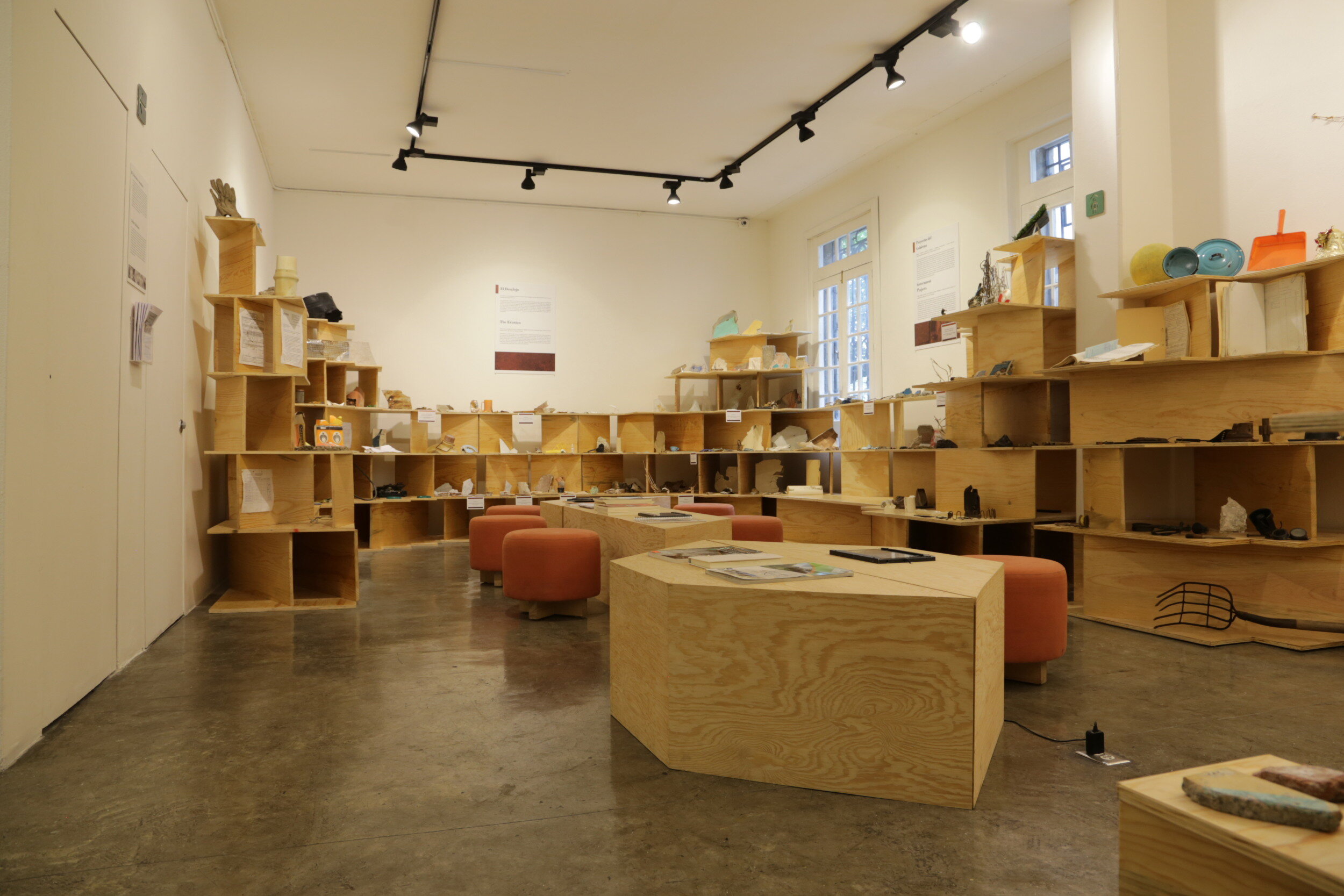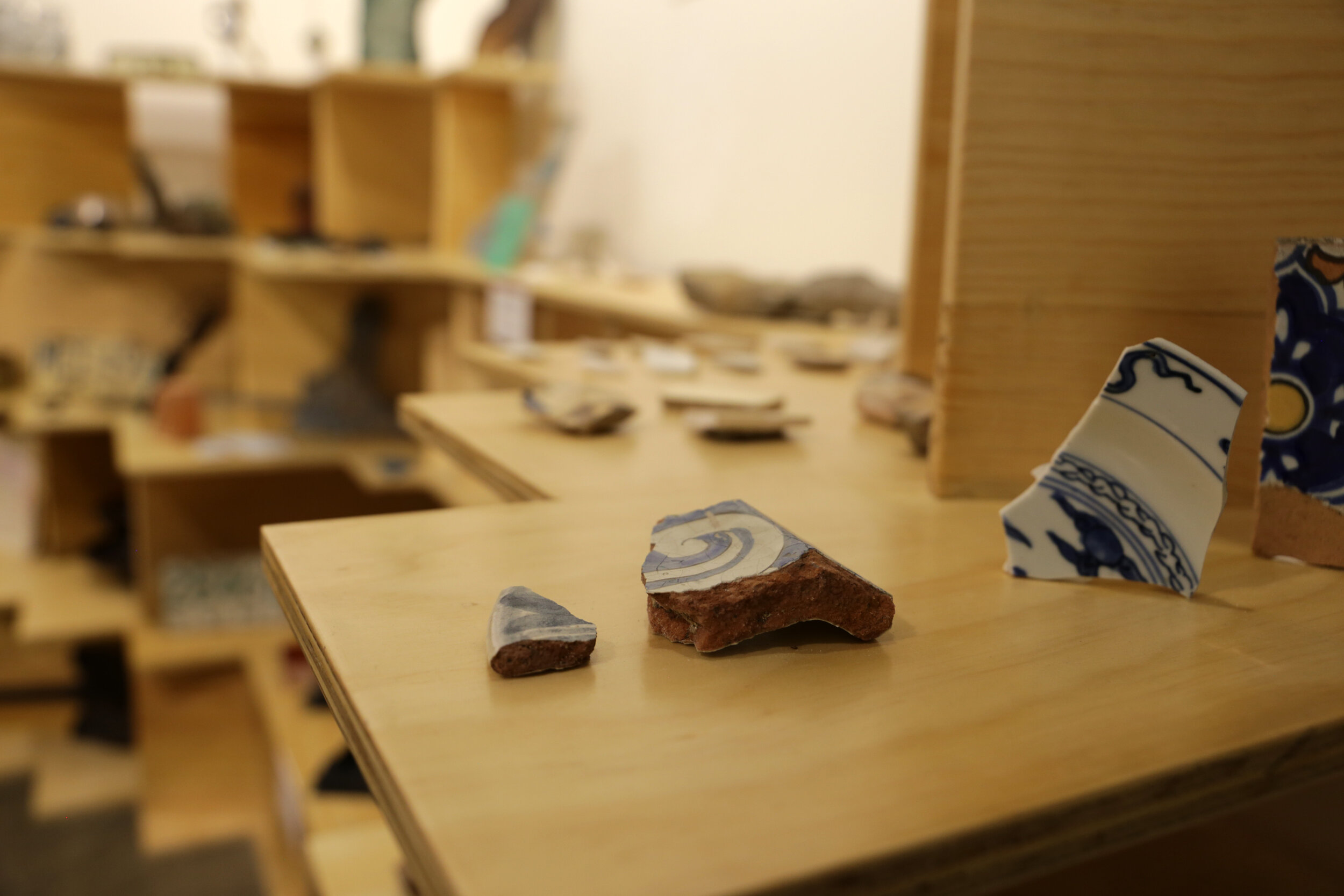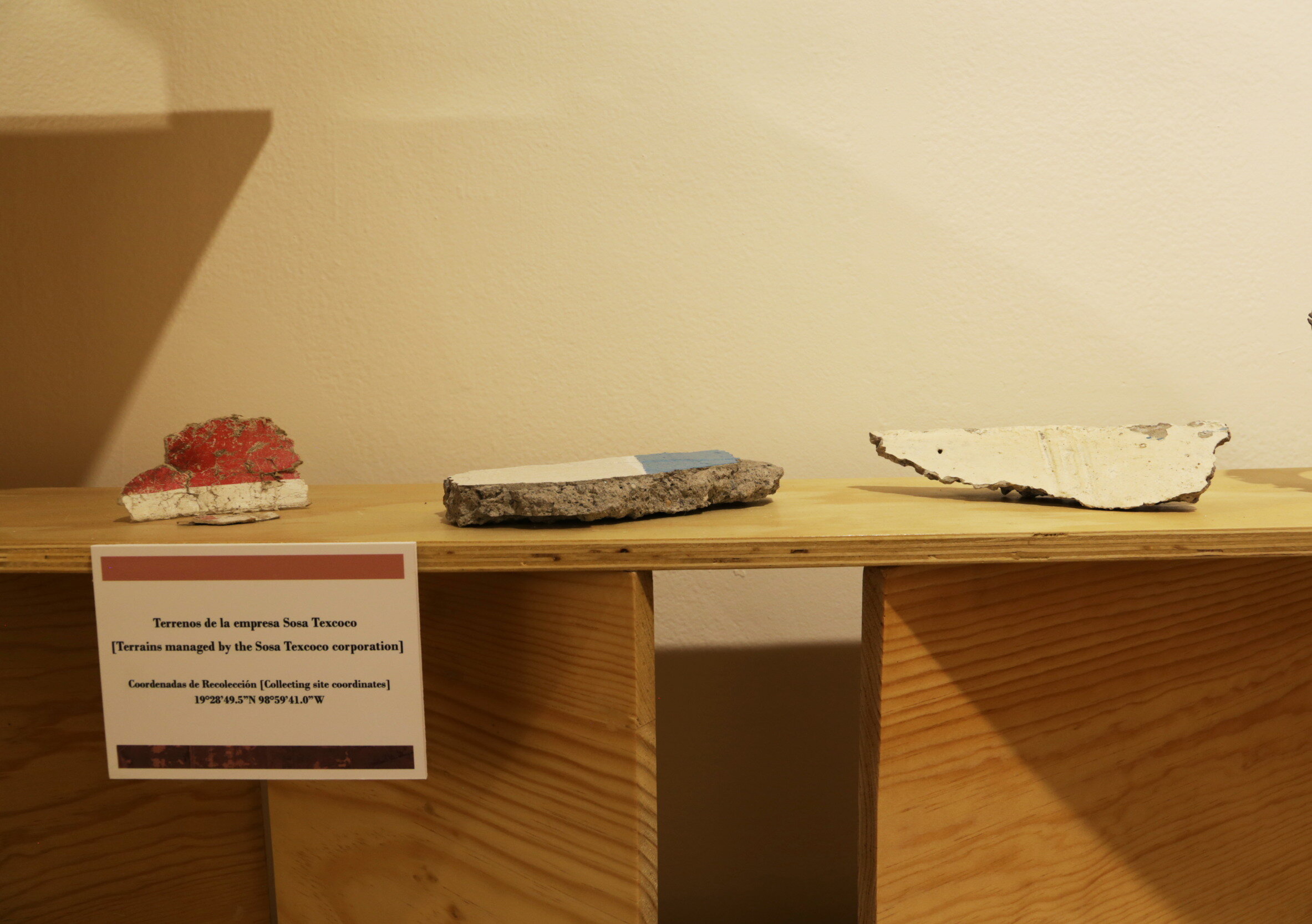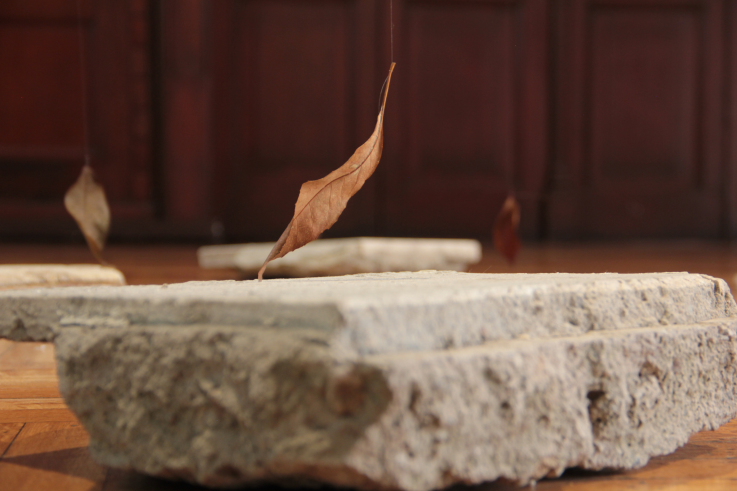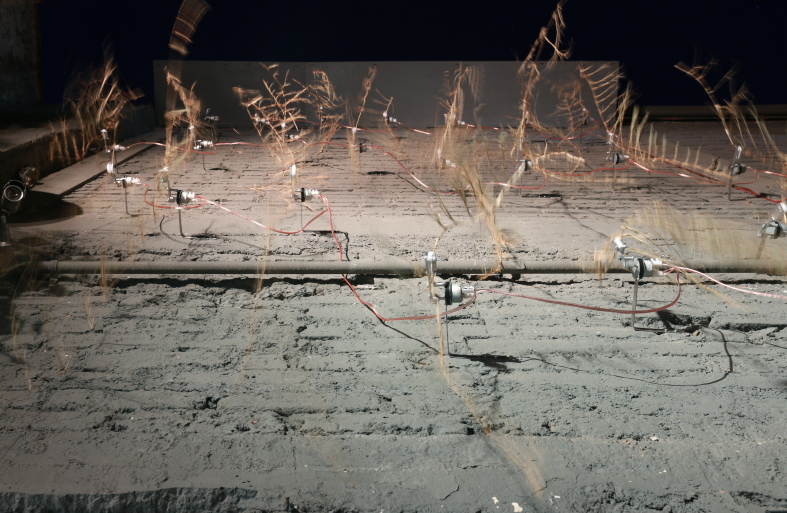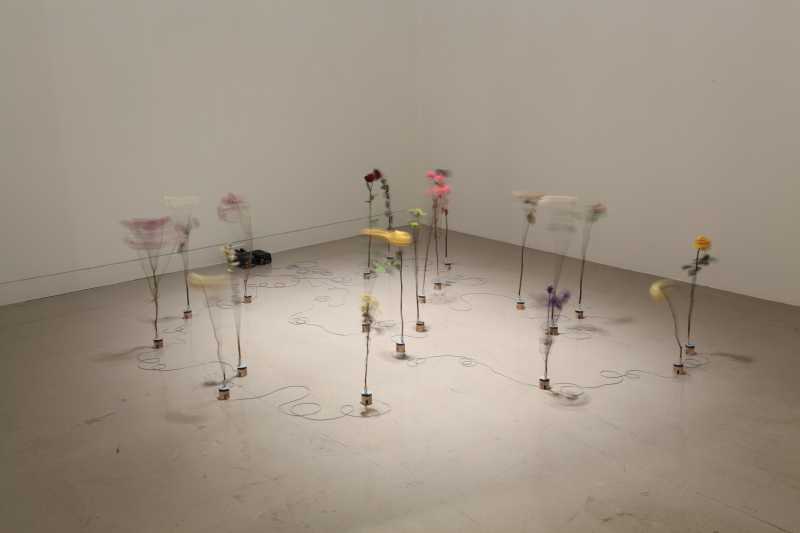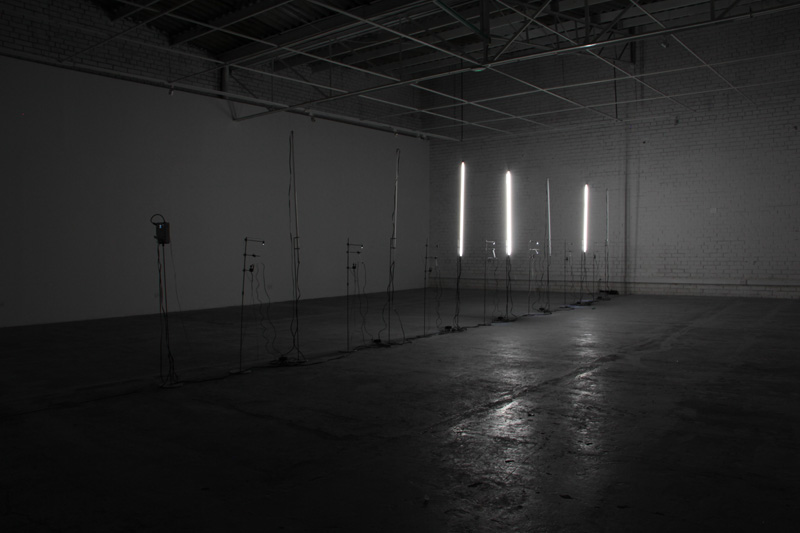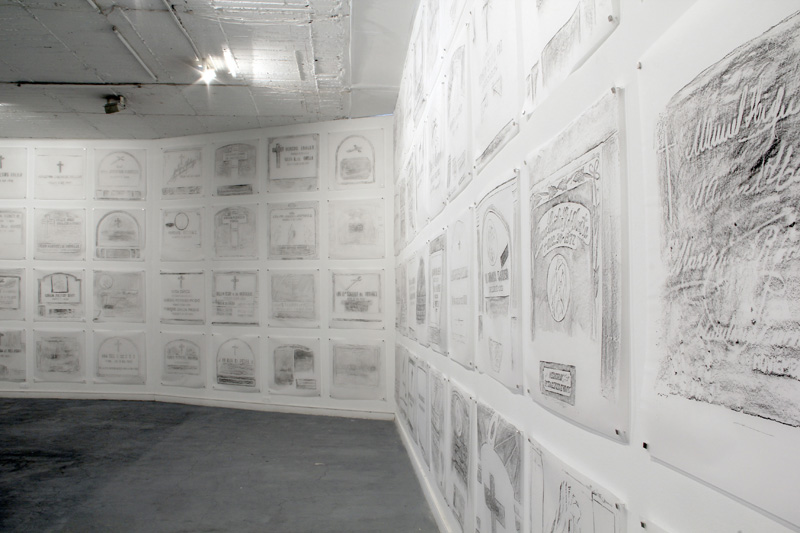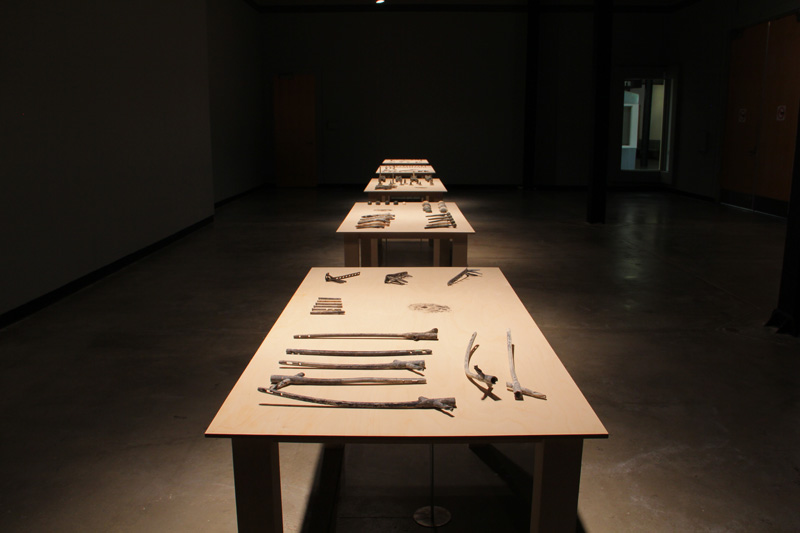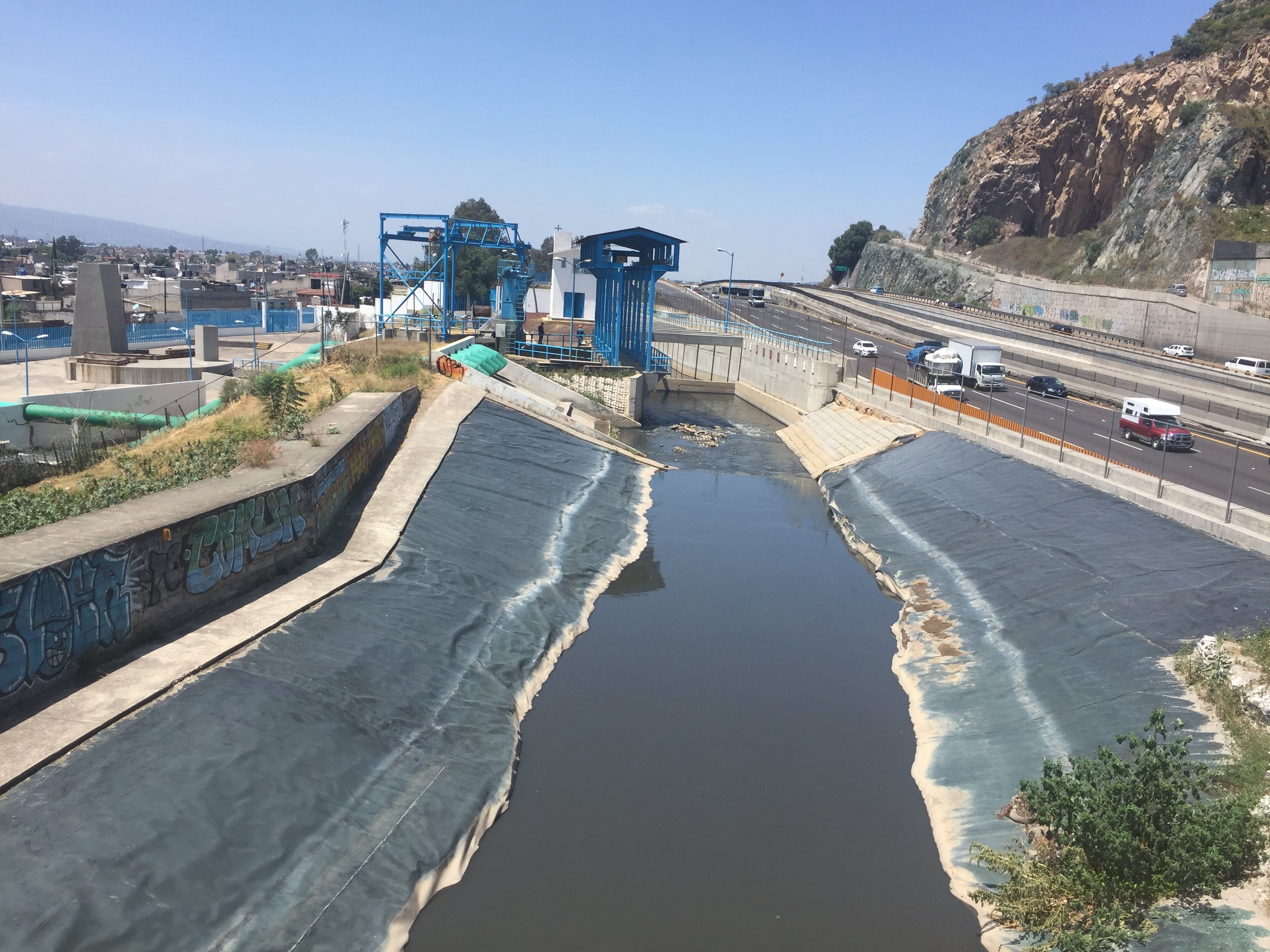NOTICIAS / NEWS
Conjuros de agua
Water Spells
01/05/2022
Uttered words are shot at things as if they were projectiles: air vibrates in the vocal tract, then in the mouth and there, a voice not only babbles or weeps but also speaks; in that speech the air is physically released from the body towards the nominated thing. When written, words physically remain on the stone, parchment, paper, or metals. They remain engraved to be read by all those people able to decodify and pronounce their symbols. Each reading produces a projectile of enunciation hurdled at something. Each projectile is a command resulting in a material re-ordering. It opens the possibility of moving the unmovable or catching the uncatchable. Its matter (vibrating body, air, paper, ink, metal, and other supports carrying the written signs towards speech and reading) moving other matter (water, soil, plants, animals, and humans).
Círculo de lectura, Fundación Júmex
Reading circle at Jumex Foundation
13/10/2021 - 10/11/2021
Los participantes leerán una selección de entradas de la Enciclopedia de cosas vivas y muertas: el lago de Texcoco*, un libro para acercarse a los mundos, vidas, agua y tierra que configuran esta región lacustre. Con la coordinación de su autora, Adriana Salazar, las entradas de este diccionario enciclopédico detonarán también la discusión sobre los conceptos de agencia, ánima y voz de aquello que llamamos “cosas”.
Conjuros de agua, Fundación Graham
Water Spells at Graham Foundation
2021-2022
This research is situated in Mexico City. It follows a series of encounters the author coordinated throughout 2019, in which a diverse range of agents met to share their perspectives on water narratives, distribution, hydric justice, ecological impact, public infrastructure, and dispossession, among other issues impacting the metropolis and its surroundings.
Follow the Dust, Art at a Time Like This
2021
At Art at A Time Like This, we present Dust samples from Lake Texcoco: tezontle, erosion and rubble, with texts Adriana Salazar has compiled for Lake Texcoco: Encyclopedia of Things Living and Dead (Mexico City, Pitzilein Books, 2019) and soundscapes proposed by Victor Navarro.
Seminario “Otras formas de existir”, muca-Roma
Other Ways of Being, a seminar at muca-Roma
01/09/2020 - 27/10/2020
En estos dos meses de lecturas, discusiones y experimentos de fabulación, descubrimos mundos que existen en otros territorios lejanos, junto al nuestro o resistiendo entre las grietas del mundo (roto) que habitamos.
Biblioteca Viviente
Living Library
3 al 15 de marzo de 2020 en el Festival Espacios Revelados / Changing Places, Guadalajara, México.
Biblioteca Viviente / Living Library
Enciclopedia de cosas vivas y muertas: el lago de Texcoco
Lake Texcoco: Encyclopedia of Things Living and Dead
La Enciclopedia de cosas vivas y muertas: el lago de Texcoco es un libro que da cuenta de las múltiples transformaciones del lago más grande en la cuenca central mexicana, luego de haber sufrido una desecación inducida durante los siglos posteriores a la colonización española. Desde su uso experimental del texto y su apropiación crítica de una metodología de conocimiento, esta enciclopedia re-interpreta un lugar, entendiéndolo como un entramado de elementos humanos y no humanos, fragmentos y temporalidades.
Lake Texcoco: Encyclopedia of Things Living and Dead is a book that accounts for the multiple transformations of the largest lake in the central Mexico basin. This lagoon was desiccated over centuries, following the Spanish conquest. Through an experimental use of the text and a critical appropriation of a knowledge methodology, this encyclopedia re-interprets the lake as an entanglement of human agents, non-human elements, fragments, and temporalities.
Editada por / published by Pitzilein Books
Enciclopedia de cosas vivas y muertas: el lago de Texcoco
Lake Texcoco: Encyclopedia of Things Living and Dead
El Museo Muca Roma se ubica en una casa porfiriana de la Colonia Roma construida sobre terrenos lacustres que, como muchas edificaciones del centro de la Ciudad de México, se hunde cada año. A pocas cuadras de este museo, el sismo del pasado 19 de septiembre devastó varios edificios: algunas personas en la zona se quedaron sin vivienda. Mientras nosotros aplastamos el fondo del lago de Texcoco, el agua escasea y la ciudad no tiene para donde crecer. Todo esto tiene que ver con la desaparición del lago más grande del centro de México, que sigue vivo bajo los cimientos del museo. Acompáñennos el próximo jueves 30 de agosto a hablar sobre las múltiples vidas de este lago, frente a sus ruinas: conversaremos sobre aeropuertos, desarrollo, proyectos fallidos y otras cuestiones, con un par de amigos antropólogos que entienden la personalidad de entidades no humanas como ésta.
The Muca Roma Museum is located in a Republican house at Colonia Roma, built on lacustrine terrains that are constantly sinking, like many buildings in downtown Mexico City do. A few blocks from this museum, the September 19thEarthquake devastated several buildings: some people in the area were left homeless. While we continue crushing Lake Texcoco’s lakebed, water becomes scarcer and the city finds no place to expand. All the latter has to do with the disappearance of the largest lake in central Mexico, still alive underneath the foundations of the museum. Join us next Thursday, August 30, to discuss the many lives of this lake, next to its ruins: we will talk about airports, development, failed projects, and other relevant issues, with two anthropologist friends who understand the personality of this non-human entity.
